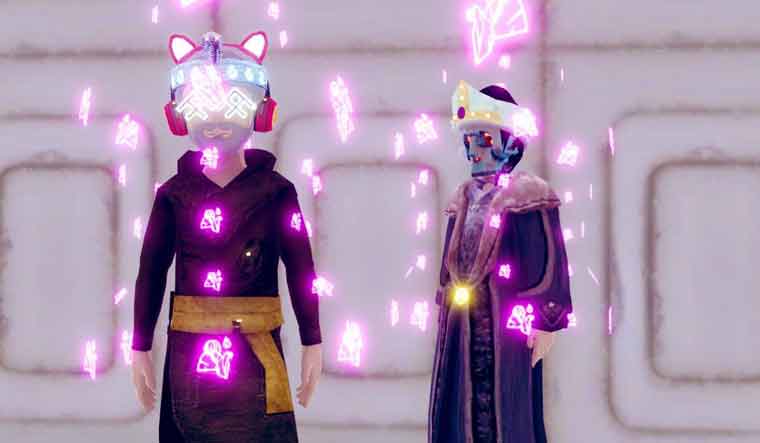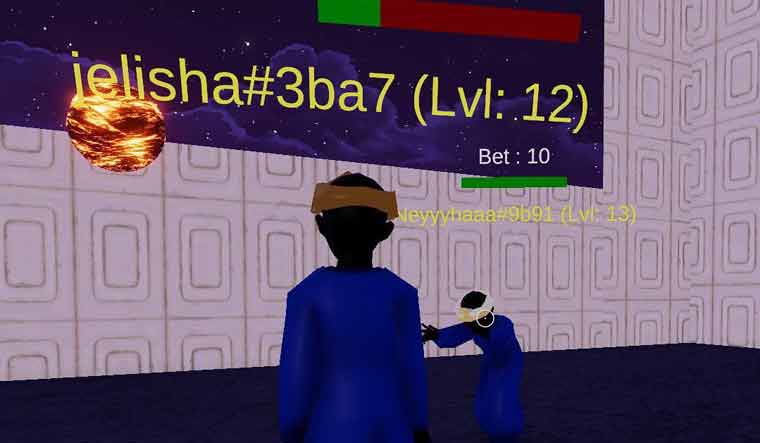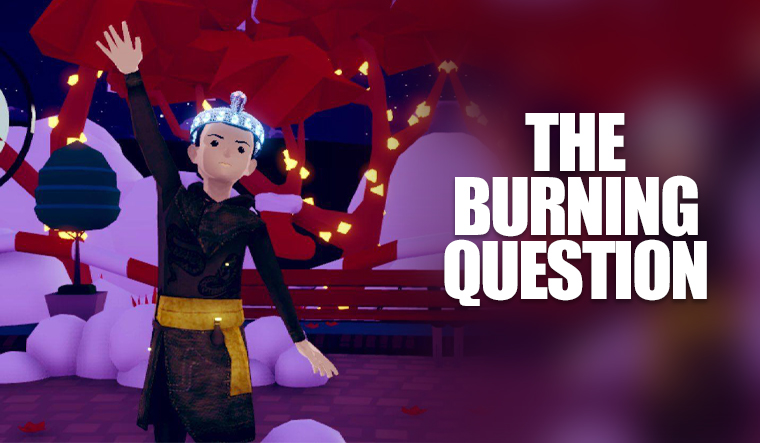The Burning Question is a column that tackles some of the biggest questions in the intersection of science, technology, geopolitics and culture that shape the world as we know it. The column will soon be expanded into a newsletter, and you can subscribe here. Subscribers will receive updates via email, Telegram. Write to editor@theweek.in with comments, suggestions and questions.
One of the countries worst affected in the Covid-induced economic devastation of mid-2020 was the Philippines. The Gross Domestic Product (GDP) contracted 9.6 per cent that financial year (the largest annual decline ever recorded), and almost 26 million people were impacted in the lockdowns that followed, as reported by IHS Markit. However, financially strapped and out-of-work Filipinos found solace in unexpected quarters—a blockchain-based smartphone game called Axie Infinity, where you could earn in-game tokens which can be converted into the national currency. In the game (highly reminiscent of Pokemon and CryptoKitties), you complete quests with digital pets, and battle them out with other players. Utilising NFTs (non-fungible tokens), you own the full rights to those digital pets. You can purchase or breed them via native tokens like Smooth Love Potion (SLP) and Axie Shards (AXS). All these assets can be transferred out of the game and sold on exchanges.
Axie Infinity was the first iteration of the Play-2-Earn (P2E) gaming model, which offered players the chance to earn cryptocurrencies by merely playing a game. By 2021, Axie players were, on average, earning five times the minimum wage in Manila. The popularity of in-game tokens like SLPs rose to such a level that it reportedly became the choice medium of exchange over the official Philippine peso.
Since the Axie 'revolution', GameFi (gaming finance) has been on a sharp uptick—globally, investors staked over $3.6 billion in crypto gaming startups in 2021, according to Drake Star Partners. A similar trend is observable in India. MapleBlock Capital, in partnership with Good Games Guild and Decentral Games, recently launched a $15-million fund to support the growing NFT, gaming, and the metaverse ecosystem.
 Visuals from WildernessP2E
Visuals from WildernessP2E
In India, one notable new entrant is Wilderness P2E, a fantasy-combat style game in Ethereum's Decentraland metaverse. Founded by Ryan Pal and Neha Singh, both B.Tech graduates from IIT Kanpur, the concept of the game was simple. You could fight both non-player characters (NPCs) and other players (PvPs) using spells and assorted magical accessories. Users could earn game assets in the form of NFTs or cryptotokens, which can be traded in the open market. Most of the NFTs are virtual wearables that can be worn across Decentraland, while giving certain bonuses within the game.
Wilderness launched on December 21, 2021. Within two months, it reported a revenue profit of $2,000, just through the sale of in-game NFT wearables. By March 2022, the developers reported peak 1,000 Daily Active Users (DAU), and an average of 300-400 DAU. The team is also planning to scale up revenue by launching the in-game currency ($WLDY) on blockchain on May 1.
The bigger picture
The rise of GameFi and the emergence of gaming experiences like Wilderness are pivotal in more ways than one. The crypto sector as a whole is accessible only to the internet native, and its organs like DeFi only to the crypto native. Theoretically, GameFi could change that by introducing its cryptotokens to an entire generation of developing/rural economies just by playing a simple game on a smartphone. Take the case of Axie. Fifty per cent of the users who started playing the game had never used cryptocurrencies before in their lives. While games like Axie have significant entry barriers (players have to purchase NFTs before starting off), newer entrants like Wilderness have no such restrictions.
Then, there is the untapped potential of the gaming market that P2E could unlock. India's gaming industry is estimated to be worth $2-3 billion and is minuscule when compared to the $40 billion US market and $46 billion China market, according to data from a CII-BCG report. The CEO of gaming company Mobius had stated that models like P2E could soon be key to capturing the Indian ecosystem.
Then there is the size of the traditional gaming economy. Youngsters every year spend billions of dollars in virtual gaming worlds for all sorts of skins, armoury and accessories. In 2018, the market for virtual skins was an estimated $50 billion, according to a Bloomberg report. Now, extrapolate the figures. The revenue possibilities for creating ownership and a global market for virtual items for gamers could be immense.
There are, however, a lot of pitfalls to avoid. The first is the creation of a sustainable economic model—under the bright lights, most pure P2E games are indistinguishable from a multilevel marketing scheme. Many games, for instance, have a toxic dependence on a steady inflow of new users to keep the system functional. Once the flow stems, the model looks ready to collapse. Second, there needs to be a renewed focus on the ‘Play’ and not the ‘Earn’ aspect of P2E—if gameplay experience development takes a backseat, the model will not be sustainable in the long run.
In conversation with THE WEEK, Wilderness founders Pal and Singh spoke about the game, the project roadmap, and what they perceived as the future of the P2E model.
Edited excerpts:
Q. How did the idea of Wilderness P2E come up?
Pal: I had played similar games in the past. They had in-game economies, items that could be exchanged with other players, and so on. I actually got banned in one such game, and I had nothing left. That impacted me a lot as a child. Then I saw P2E games picking up, amid the NFT revolution, and everything just clicked. Game items should be NFTs, and players should be able to own them and trade with them. So, that was the basic inspiration. The exact mechanics of the game came later.
Q. How would you describe Wilderness?
It is a multiplayer combat game where you can fight monsters [NPCs], as well as other players. When you win, you get actual cryptotokens [either NFTs or coins], and you can sell those items. You earn something when you play the game.
Q. By the end of this month, the [native token] $WLDY will be available on the blockchain. What changes will that bring about?
By releasing them on blockchain, we are making the process [of buying and selling] more efficient. Let us say, you earned 1,000 coins by playing the game. Now, you see that there is an item available for 1,500 coins. You might just want to put in some of your own [fiat] money and buy those coins to get the item quickly, right? Right now, there is no way to do it. So, it is mostly about increasing efficiency. Additionally, the value of the token is backed by the NFTs in the game, which are already selling out. This will enable us to measure the true value of the game’s ecosystem, and monetise in an efficient way. The players will be able to convert Wilderness tokens to Mana/MATIC/DAI on a decentralised exchange like Quickswap.
Q. How do you earn the tokens?
The tokens will be the currency of value. There are different avenues to earn them. You can start by [training] fighting NPCs. There will be different events [like daily PvP events] in which you can participate in to earn tokens. Then, there will be daily tasks you can complete to earn rewards.
 PvP experience in Wilderness P2E
PvP experience in Wilderness P2E
Q. The size of the gaming economy is something that a lot of people have difficulty getting their heads around. 'Who would buy skins or accessories or NFTs', is one common refrain you would hear. What has the response been from the community so far?
NFTs are something still relatively new, right? However, the [traditional] gaming economy has been around forever, and it is worth in the billions. People have been buying and selling game items at least in the past 10-15 years. They have been paying for skins, membership, and other privileges. That is where the NFT technology comes in. The first items we released in the game were all P2E rewards—that is no one had to pay for them. Those who got it, got it for free. When it went out of stock, people started selling it. We know people who have earned upwards of $500 because they started playing the game in the initial months of its release.
Q. Wilderness is both free-to-play (F2P) and P2E. How do you respond to the people who see a contradiction there, and question the model?
That is a fair question for people to have. [In the traditional gaming word] companies release games, and they earn millions of dollars through it. It is different in the crypto world. Through NFTs and cryptotokens in Web3, we are recognising the value of all the contributors. [Whether you are playing the game or developing it] everyone is contributing value in their own way. Here, that value is getting redistributed, instead of one company monopolising it. We expect the market to explode in the next four to five years, and most games will have to migrate to a P2E model.
Q. You said that you expect the market to explode. In India, games like Axie (which went viral in Philippines, which has similar social dynamics to India) haven't yet made a splash. What would you accredit that to?
Whatever is being built in the crypto world is not region-limited. It might be more popular in some regions, but the product is for a global audience. I think the reason Axie Infinity did not do as well as expected in India is because India has a lot of smartphone internet penetration, but not the same level of PCs or computers [penetration]. That could be one reason. I think it makes sense for any country with a lower average GDP to be the first adopters of such games. It has to be a fine balance between low GDP and proper game access.
Q. The developers of Axie had recently come out and stated that they did not pay as much attention to game development as they should have in the initial stages. They were building all the infrastructure [sidechain, wallet] around it. As a P2E game developer, how do you balance the external technical requirements and the gameplay development?
I have great respect for Axie Infinity because they had no option but to do all that. There was no way to bypass Ethereum’s high gas fee, and there was no clear L2 solution when they started building. Now, the situation is different. In crypto, development happens very fast. [Developments in] the last one year in crypto probably equates to 10 years in any other market. So, now, we can just use amazing products that already exist. All our NFTs are on the Polygon blockchain, which is an L2 solution. I don’t think we will have to dive into the infrastructure part much. Primarily, our focus will be on improving the game and experience.
Q. What role will P2E games play in crypto onboarding in India?
Singh: We are already seeing that trend. The first free NFT that you get is the on-ramp to the NFT world. I have been streaming the game on Twitch, and have been able to onboard a lot of people who weren't very familiar with blockchain technology. I just asked them to open a Metamask wallet, and they could start playing immediately. Some of them said said they earned their first NFTs in the game, and now they are coming back again and again. An added advantage is that there is no barrier fee to start playing Wilderness.





